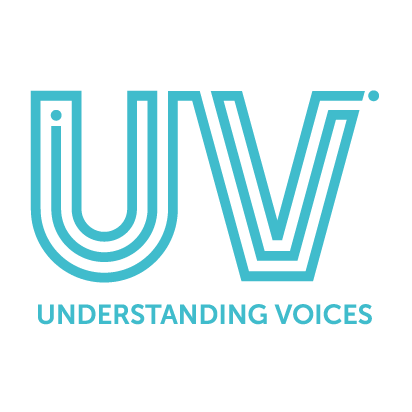Voices and inner speech

Most of us talk to ourselves in our heads. For example, you might say to yourself ‘Remember to buy milk’ while heading out in the morning. This is called inner speech, and some scientists think it is linked to voice-hearing. The theory says that a person hears a voice when they have actually talked to themselves in inner speech, but for some reason don’t recognise these thoughts as their own. The result is that a bit of inner speech that was actually produced by you becomes attributed to another person or voice.
There are some reasons for thinking that inner speech is linked to hearing voices:
- fMRI scanning studies have shown that voice-hearing activates the same part of the brain as talking (both out loud and to yourself)
- Muscles around the mouth have been found to move when a person is hearing voices, and this also happens when a person is doing inner speech.
Voices in Your Head
Scientists think that inner speech develops in childhood. The private speech that children use to direct behaviour (for example, while playing and talking to themselves) develops out of a dialogue with those who looked after them as babies. Over time, it is gradually internalized to form verbal thought or inner speech.
Because of where it comes from, inner speech often has the ‘to-and-fro’ quality of a conversation. To speed up our thinking, it gets shorter or condensed. But in certain situations – for example, when we get stressed – it can expand again. Inner speech can also occur in other people’s voices. Have you ever replayed an argument with a loved one after it occurred? When you do this, do you hear their voice in your head? Do you ever replay or change what they say, enabling you to say things you wished you had said? This is an example of how we can hear other people’s voices in our heads and make them say different things.
Inner speech varies from person to person:
- It can be expanded (‘Remember to buy milk’) or condensed (‘Milk’)
- It is often like a conversation, and can occur as other people’s voices (sometimes as memories and sometimes as new thoughts)
But if voices are inner speech, why do people not recognize them as their own?
Sometimes a person’s inner speech does not sound like them, and when this occurs, it is easier to understand how it could be experienced as coming from somewhere else. There are also other reasons:
Stress or strain. Many people start to hear voices when they are struggling in life. Sleep deprivation, drugs or alcohol, and major life changes such as a bereavement or the end of a relationship can make it easier to make mistakes and not recognize our own inner speech.
Inner speech can be intrusive. When thoughts just ‘pop into our heads’, they do not feel like they have been “effortfully generated” and are more likely to be experienced as coming from somewhere or someone else.
The content is unacceptable. Sometimes our brains seem to tease us by thinking the worst thing. (For example, have you ever thought ‘Jump!’ when near a big drop?) Some people can find these thoughts so unacceptable that they are sure that they are ‘not me’.
Of course, not all voices can be reduced to episodes of inner speech. There are many different types of voices, and it is likely that each will require different explanations. Some voices, for example, appear to have their roots in memory: they are actual or distorted memories of earlier life-events, often traumatic ones. You can find out more about this here.
Find out more
Read
Charles Fernyhough (2013). The Voices Within: The power of talking to yourself. New Scientist.
Ben Alderson-Day and Charles Fernyhough (2015). Inner speech: Development, cognitive functions, phenomenology, and neurobiology. Psychological Bulletin.
Ben Alderson-Day, Susanne Weis, Simon McCarthy-Jones, Peter Moseley, David Smailes and Charles Fernyhough. (2016). The brain’s conversation with itself: Neural substrates of dialogic inner speech. Social Cognitive & Affective Neuroscience.
Ruairj J Mackenzie (2020). Inner speech, internal monologues and “hearing voices”: Exploring the conversations between our ears. Technology Networks.
Peter Moseley (2014). Talking to ourselves: The science of the little voice in your head. The Guardian.
Simon McCarthy Jones (2019). Unwanted unacceptable thoughts: most people have them and we should talk about them. The Conversation.
Watch
Charles Fernyhough (2016). The Science of the Voices in your Head. The Royal Institution.
Hearing the Voice (2016). Voices and Inner Speech. Prezi.
Listen
Charles Fernyhough (2015). The Voices in Our Heads. Hearing the Voice.
